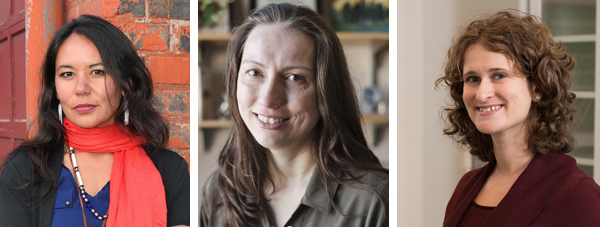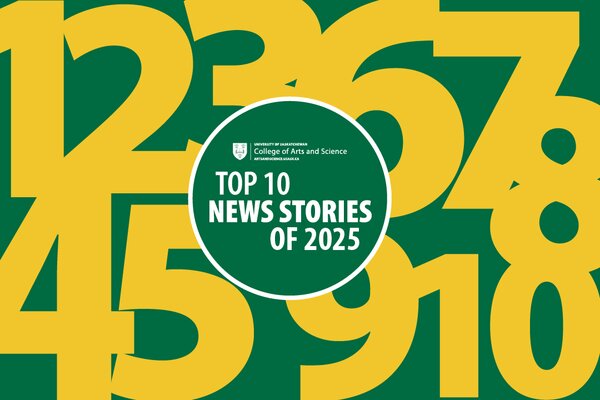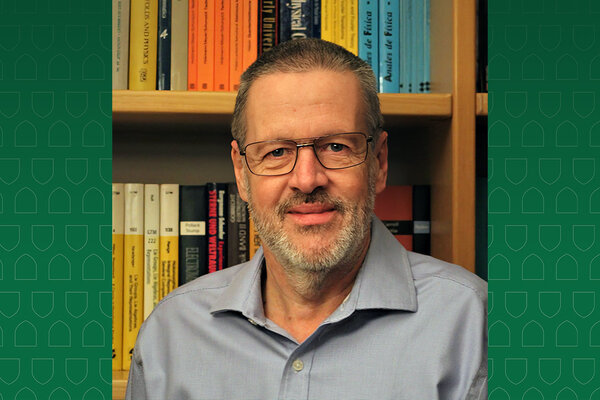
$6 million awarded for Canada Research Chairs at USask
USask’s new Tier 2 CRCs—all based in the College of Arts and Science—will each receive $120,000 a year for five years
By USask Research Profile and Impact
Three new Canada Research Chairs (CRCs)—all held by female academics recognized as potential leaders in their fields—have been established at the University of Saskatchewan (USask) to carry out innovative research into air quality in cold climates, enhancing Indigenous health and wellbeing, and preventing cyberattacks.
The announcement comes alongside the renewal of three existing USask CRCs researching bacterial resistance, the electronic structure of novel materials, and economic development barriers facing northern, remote and Indigenous communities.
“These prestigious awards underscore USask’s place as a centre of research excellence and our commitment to a diverse and inclusive research community,” said USask Vice-President Research Karen Chad. “From cyber security to bacterial resistance, USask is pushing the boundaries of knowledge and finding answers to some of the most pressing issues facing our world today.”
At an event on June 14 at the University of Victoria, Canada’s Science and Sport Minister Kirsty Duncan announced a total investment of more than $275 million in new and renewed CRCs at 52 institutions.
The CRC program was created by the Government of Canada in 2000 to attract and retain some of the world’s most accomplished and promising minds and to boost Canada's competitiveness in the global knowledge-based economy.
USask’s new Tier 2 CRCs—all based in the College of Arts and Science—will each receive $120,000 a year for five years. Tier 2 CRCs are awarded to excellent emerging researchers who have been recognized by their peers as having potential to lead in their field.
Dr. Natalia Stakhanova (PhD), Canada Research Chair in Security and Privacy, recruited from the University of New Brunswick, studies the digital identity of human adversaries and behaviour behind cyberattacks.
Stakhanova, associate professor in the department of computer science, investigates methods to track and analyze the digital identity of an adversary, examines strategies commonly deployed by adversaries to disguise their behaviour, and designs techniques for identifying and understanding malware and legitimate software.
Her research goal is to enable scientific exploration of adversarial communities and to provide security practitioners with the tools to predict and detect threats.
Dr. Michelle Johnson-Jennings (PhD), Canada Research Chair in Indigenous Community-Engaged Research, recruited from the University of Minnesota, is one of the few Indigenous psychologists focused on healing interventions on the land. The associate professor in Indigenous studies will engage Indigenous communities around food and land-based healing practices that reduce addiction and obesity risks and promote well-being.
Research has found that being on the land affects the brain positively and produces more life-long behavioural changes. Johnson-Jennings, a Choctaw Nation Enrolled Tribal Member, will investigate whether Indigenous groups heal more swiftly and experience longer-lasting change if health interventions are made on the land, reconnecting communities to ancestral teachings. By engaging Indigenous communities in Canada, the U.S. and New Zealand, Johnson-Jennings will develop a global approach to land-based healing.
Dr. Tara Kahan (PhD), Canada Research Chair in Analytical Environmental Chemistry, recruited from Syracuse University, researches environmental pollutants in snow and ice that could affect people’s health, as well as air quality inside people’s homes. Kahan, associate professor in the Department of Chemistry, investigates chemical transformations of pollutants in ice. Some environmental pollutants undergo different chemical reactions in snow and ice than in liquid water. The health effects of these pollutants may, therefore, be different in the presence of snow.
Canada’s cold weather also means that, during the winter, people in many parts of the country spend most of their lives indoors. Yet, we lack a good understanding of the chemistry that affects air quality in houses, cars and the workplace. Kahan has developed an instrument to measure the composition of air indoors.
Three Tier 1 CRCs, whose terms at USask are being renewed, will each receive $1.4 million over seven years to pursue their research. They are full professors and outstanding researchers acknowledged by their peers as world leaders in their fields.
Dr. Ken Coates (PhD), Canada Research Chair in Regional Innovation, in the Johnson-Shoyama Graduate School of Public Policy, identifies barriers preventing rural and remote communities from reaping the benefits of scientific and technological innovation enjoyed in more metropolitan areas. For instance, the Internet in the Canadian North is five to 10 years behind the South.
Working with Indigenous groups, northern and rural communities, business groups, and provincial and federal governments, Coates examines innovation-based investment, skills training and entrepreneurship in non-metropolitan areas, looking at best practices in other countries that can be applied in Canada. He is co-ordinating international efforts to encourage the use of new technologies in northern, remote and Indigenous communities.
Dr. Miroslaw Cygler (PhD), Canada Research Chair in Molecular Medicine Using Synchrotron Light, in the biochemistry, microbiology and immunology department, uses the Canadian Light Source synchrotron, a national research facility of the University of Saskatchewan, to work on a new approach to combat disease-causing bacterial resistance. By targeting the bacteria’s ability to cause disease instead of killing the whole pathogen, the pressure to develop resistance is reduced. Cygler’s research in the College of Medicine provides ammunition in the war against antibiotic-resistant ‘super bugs’.
Dr. Alexander Moewes (PhD), Canada Research Chair in Materials Science using Synchrotron Radiation, uses the Canadian Light Source synchrotron, a national research facility of the University of Saskatchewan, to answer key questions about the electronic structure of novel and advanced materials.
He pushes boundaries in the field of spintronics, controlling the electron spin to store information more efficiently, and the study of modern luminescence materials that provide dramatic energy savings. His research, in the physics and engineering physics department, promises to increase the processing speed and storage capacity of computers and to develop more efficient lighting applications.
USask currently has 19 active CRCs in a wide range of disciplines.


